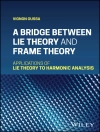First course calculus texts have traditionally been either
‘engineering/science-oriented’ with too little rigor,
or have thrown students in the deep end with a rigorous analysis
text. The How and Why of One Variable Calculus closes this
gap in providing a rigorous treatment that takes an original and
valuable approach between calculus and analysis. Logically
organized and also very clear and user-friendly, it covers 6 main
topics; real numbers, sequences, continuity, differentiation,
integration, and series. It is primarily concerned with developing
an understanding of the tools of calculus. The author presents
numerous examples and exercises that illustrate how the techniques
of calculus have universal application.
The How and Why of One Variable Calculus presents an
excellent text for a first course in calculus for students in the
mathematical sciences, statistics and analytics, as well as a text
for a bridge course between single and multi-variable calculus as
well as between single variable calculus and upper level theory
courses for math majors.
Tabella dei contenuti
Preface ix
Introduction xi
Preliminary notation xv
1 The real numbers 1
1.1 Intuitive picture of R as points on the number line 2
1.2 The field axioms 6
1.3 Order axioms 8
1.4 The Least Upper Bound Property of R 9
1.5 Rational powers of real numbers 20
1.6 Intervals 21
1.7 Absolute value |·|and distance in R 23
1.8 (*) Remark on the construction of R 26
1.9 Functions 28
1.10 (*) Cardinality 40
Notes 43
2 Sequences 44
2.1 Limit of a convergent sequence 46
2.2 Bounded and monotone sequences 54
2.3 Algebra of limits 59
2.4 Sandwich theorem 64
2.5 Subsequences 68
2.6 Cauchy sequences and completeness of R 74
2.7 (*) Pointwise versus uniform convergence 78
Notes 85
3 Continuity 86
3.1 Definition of continuity 86
3.2 Continuous functions preserve convergence 91
3.3 Intermediate Value Theorem 99
3.4 Extreme Value Theorem 106
3.5 Uniform convergence and continuity 111
3.6 Uniform continuity 111
3.7 Limits 115
Notes 124
4 Differentiation 125
4.1 Differentiable Inverse Theorem 136
4.2 The Chain Rule 140
4.3 Higher order derivatives and derivatives at boundary points 144
4.4 Equations of tangent and normal lines to a curve 148
4.5 Local minimisers and derivatives 157
4.6 Mean Value, Rolle’s, Cauchy’s Theorem 159
4.7 Taylor’s Formula 167
4.8 Convexity 172
4.9 0/0 form of l’Hôpital’s Rule 180
Notes 182
5 Integration 183
5.1 Towards a definition of the integral 183
5.2 Properties of the Riemann integral 198
5.3 Fundamental Theorem of Calculus 210
5.4 Riemann sums 226
5.5 Improper integrals 232
5.6 Elementary transcendental functions 245
5.7 Applications of Riemann Integration 278
Notes 296
6 Series 297
6.1 Series 297
6.2 Absolute convergence 305
6.3 Power series 320
Appendix 335
Notes 337
Solutions 338
Solutions to the exercises from Chapter 1 338
Solutions to the exercises from Chapter 2 353
Solutions to the exercises from Chapter 3 369
Solutions to the exercises from Chapter 4 388
Solutions to the exercises from Chapter 5 422
Solutions to the exercises from Chapter 6 475
Bibliography 493
Index 495
Circa l’autore
Amol Sasane, Mathematics Department, London School of Economics, UK.












